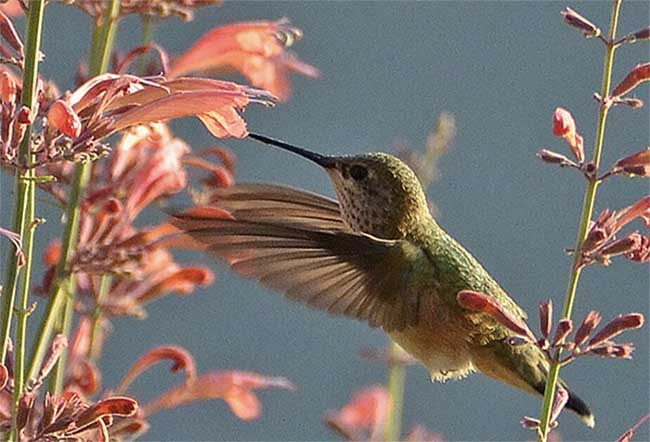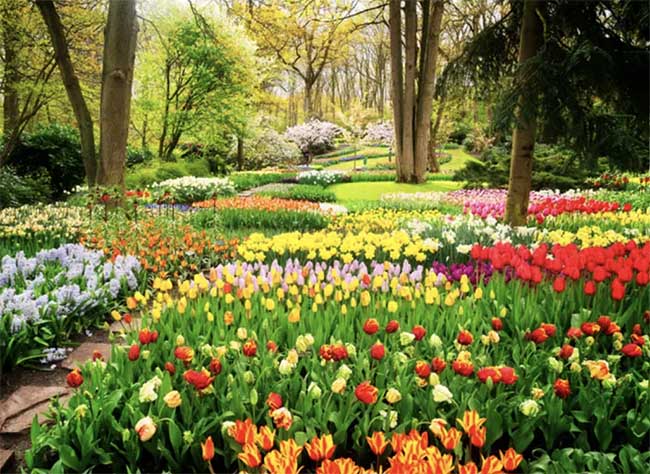10 Best Flowers That Attract Hummingbirds to Your Garden
Hummingbirds are one of the most fascinating and beautiful birds you can add to your backyard. If you’re an avid gardener or even a novice and want these wonderful creatures to come closer to you, planting flowers that attract hummingbirds is the first step. Let’s take a look at these top 10 best flowers that attract hummingbirds:
Butterfly Weed
There are many varieties of Butterfly Weed (also known as Indian Blanket), but the orange and red varieties are the most effective for attracting hummingbirds. These plants bloom all year round, making them an excellent choice for zones 8 and above. Their flowers are about 4 inches long, with the top petals orange and the bottom red. These are called feeders because hummingbirds use them to drink nectar.
Cardinal Flower
You’ll find this flower in sunny areas growing in wild meadows and along fences. It has a small purple flower with five petals. A single flower head can produce up to 30 flowers. Hummingbirds love to sip from their long, tubular red-colored flowers. They’re a perfect choice for areas with full sun to partial shade.
Salvias
Several annual and perennial species in the vast Salvia genus belong to the mint family. Salvia is a fantastic plant for the rear or middle of flowerbeds because of its tall spikes of tiny, delicate blooms. The mid-summer flowering period of perennial salvia lasts until the end of the season. If kept wet, they will blossom frequently. This clump-forming plant has a height range of 18 to 36 inches, doesn’t need division, and gets bigger over time. It is quite simple to cultivate this plant.
Mexican Sunflower
This stunning flower attracts hummingbirds as well as butterflies. It grows to a height of about 4 feet and has orange-red flowers. The leaves are dark green and resemble the common sunflower but smaller. They grow in thick clumps and provide plenty of nectar for pollinators. This is one of the best flowers that attract hummingbirds, even in cooler climates.
Globe Morning Glory
This is a flowering vine that grows up to 20 feet long. Its flowers are large and purple with a white center. This is another great flower that attracts hummingbirds, especially in the spring. It has dark green leaves that turn red in the fall. The leaves are heart-shaped and measure 8 inches long. Globe Morning Glory is a long-lasting plant and will flower for a long time if you keep cutting it back.
Scarlet Sage
This showy, red flower is native to Texas and has become a favorite garden because it attracts hummingbirds. It’s a perennial flower with a blue-green color and grows about 6 to 18 inches tall. Scarlet Sage prefers full sun but does well in partial shade. It also does well in sandy soil and is drought-tolerant. The leaves are about 2 inches long and grow in a rosette pattern. Leave some of the flowers in your garden year-round, and you’ll see hummingbirds visiting them until the first frost.
Queen’s Trumpet
This plant is an annual that grows up to 5 feet tall. Its pink-purple flowers measure up to 6 inches across. Although it’s an annual, it could last a few years if you leave some flowers in your garden. Queen’s Trumpet prefers a sunny spot but does well in partial shade. It’s a great choice for areas with sandy soil. The leaves are thin and grow in a rosette pattern. They’re about 4 inches long and have a silvery-blue color. Keep the Queen’s Trumpet watered, and you’ll see it grow quickly.
Desert Marigold
This is a flowering shrub that grows up to 3 feet tall. It’s a great choice for growing in sandy soil and does well in most areas of the United States. Desert Marigold grows in a shrub shape and has orange-red flowers. It does best in a full-sun area and requires very little water. It’s a long-lasting plant that produces many flowers. You can leave some flowers in your garden year-round and see hummingbirds visiting them until the first frost. The leaves are thin and grow in a rosette pattern. They have a light green color and measure about 2 inches long.
Mandevilla
The Mandevilla genus’s tropical and subtropical flowering plants are popularly referred to as “rock trumpets”. Mandevilla can be planted in the ground or in containers, the shape and vivid color of the Mandevilla blooms draw hummingbirds to them.
Hummingbirds can readily delve deep into the tube-shaped, trumpet-like blooms of Mandevilla flowers to get the nectar within because of their form. Hummingbirds are drawn to the brilliant colors, particularly on bushes with red blossoms.
Hanging Begonia
This flowering plant grows best in a hanging basket or on a trellis. It can grow up to 3 feet, and its flowers come in various colors. Hanging begonias prefer partial shade but do well in full sun, too. They do well in many soil types but need water. The leaves are thin and grow in a rosette pattern. They’re about 2 inches long and have a silvery-green color. Hanging begonias are easy to grow and are a great choice for a beginner gardener.

